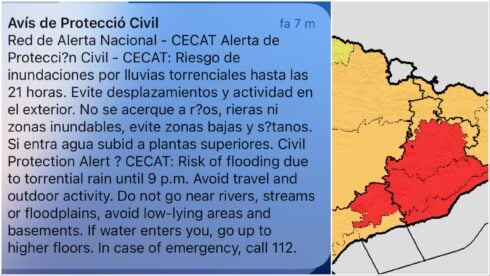 Lisa Tilley investigates the battle to reintroduce the lammergeyer vulture to the sierras of Andalucia
Lisa Tilley investigates the battle to reintroduce the lammergeyer vulture to the sierras of Andalucia
THE lammergeyer is affectionately known as the ‘bearded vulture’ in English, on account of its facial plumage; but in Spanish the bird has a more menacing title, el quebrantahuesos: the bone-crusher. The name is well earned – the quebrantahuesos breaks the bones of its chosen carcass and devours the marrow inside. Add to this grisly talent the fact that an adult bone-crusher can stretch to almost three metres from one wing-tip to the other, and it is hard to believe that the formidable bird was actually wiped from the face of Andalucía altogether by the 1980s.
The quebrantahuesos (Gypaetus barbatus) soared in abundance over the sierras of the region until the end of the 19th century, when its numbers began a sharp decline. It is thought that, in the Sierras de Cazorla, Segura y Las Villas of the Jaén province, five pairs remained in 1956. These disappeared one by one over the following decades until one final, lone specimen was lost in 1986.
Reintroduction
After its extinction in the area, the Junta de Andalucía regional government began to invest in the reintroduction of the bird. The Gypaetus Foundation – a non-profit organisation which shares its name with the Latin word for the lammergeyer – was established with more than 1.5 million euros, 75 per cent of which came from the European Union.
It is hoped that, in the near future, the quebrantahuesos will once again circle the penninsula’s highest peak: Mulhacén in the Sierra Nevada. The foundation is also working to realise the reintroduction of the bird to the Sierras de Cazorla, Segura y Las Villas – the areas rich in biodiversity in Jaén where the project is based – as well as the Sierra de Castril in Granada, among others.
“This year is the second in which we have released quebrantahuesos chicks in Andalucía,” explains Juan César Salamanca Ocaña, from the Gypaetus project. “Last year we released three males: Tono, Faust and Libertad. This year we released another male, Pontones, and a female, Segura. Hence, there is a total of five quebrantahuesos free in Andalucía that can now fly amongst nature.”
But the project has taken almost 20 years to reach this stage. First, an arduous process of analyzing the landscape and the threats the birds face must be carried out before any can actually be released. The threats to the birds are many, and predictably, entirely connected to human behaviour.

The bearded vulture was basically hunted to extinction, either as a prime poaching prize in itself, or because they were perceived as ‘competition’ for hunters. The hunting of birds of prey has gradually become less and less acceptable in the public consciousness and much fewer birds have been found to be killed by hunters in recent years. “Although we hope it will never happen here, in other places vultures are still shot down by poachers,” César told the Olive Press.
“But the greatest threat to the bird is the illegal use of poisoned bait that unscrupulous people scatter indiscriminately in the countryside to kill predators such as the fox.” The vultures have also been affected by the ever-increasing use of pesticides in farming; the organisation is therefore working with farmers to ensure that the vultures’ territories are free from toxic substances laid by humans.
Cable car folly?
The quebrantahuesos is generally highly-sensitive to the presence of humans, and the encroaching signs of humanity in the sierras present setbacks to the success of the program. The birds are also prone to electrocution or fatal injury when they collide with power cables in conditions of low visibility.
With these facts in mind, the Gypaetus Foundation is especially worried about the proposed teleférico, the huge-scale cable car which is proposed to run between Granada city and the ski-resort in the Sierra Nevada. The teleférico, argues the foundation in a report drawing on scientific research, will severely hamper – if not halt – the reintroduction of the bearded vulture to the Sierra Nevada.
The proposed cable car will have 100 cabins, carrying 30 passengers each, there will be 27 supports 80 metres in height and a possible 3,600 people could be transported every hour. The sheer scale of the project, its audible impact, and the human presence it will create will simply drive the vultures away, make breeding in the area impossible and amount to a further loss of habitat for the birds.
Should the quebrantahuesos be introduced to the area, the cables of the proposed teleférico could be fatal to the birds, especially in the Sierra Nevada where visibility is often hampered by snow blizzards. Cables have proven to be one of the main killers of the bird in the Alps and the Pyrenees.
The loss of birds after their release in such a way is unthinkable, as so much time and work is put into the breeding process. In 1996, the foundation opened a breeding centre with 12 pairs of baby bone-crushers to care for. The breeding process is by no means fast, as the birds do not reach reproductive maturity until they are eight years old. Then, two eggs are usually laid at once and, in a cruel introduction to life, the oldest chick always kills its emerging sibling. In the breeding centres the eggs are separated and one is ‘adopted’ by another couple until the hatching is completed. The chicks must also not be handled by humans between eight and 13 days old or they will recognise the person as their parent and fail to integrate in the wild.
When the long-awaited moment comes to release the birds, the organisation practice what they call ‘outdoor breeding’ or ‘hacking’. The three-month-old chicks are transferred to a suitable shelf in a rocky cliff in the great outdoors. There they will stay for a month, eating from a specially provided trough, until finally they take their first flight between the mountains. The theory is that the month on the ledge will compel the birds to always return to that spot, as they will consider it their place of birth.
The quebrantahuesos takes five years to form a mating couple and to begin to establish a territory, and at least seven years to begin to breed. “Taking into account that each pair will only produce one chick, and in some years none at all, we have to think of this as a very long-term project” César adds.
Despite projects such as the Gypaetus venture, Spain has recently been reprimanded by the EU for failing to provide sufficient protected areas for the conservation of birdlife, as reported in the Olive Press (Spain slammed by EU for not protecting birds, issue 31). The Gypaetus Foundation is frustrated by its country’s lack of progress: “All we can say is that Spain, like any other EU country, should respect and comply with the environmental legislation. Nature should be inalienable for all the citizens of Europe and we are obliged to conserve it for the generations to come.”
Towards the goals of reintroduction and conservation of the quebrantahuesos, the foundation invests time and resources in education projects for the local people, with limited success: “In general, we think that the attitude of the population is changing. But, the change is slow,” says César. “Our society is strongly influenced by television and radio, and unfortunately these scarcely dedicate minutes to themes of nature, and to teaching us that everything we do, ultimately, ends up affecting us. First it is essential to change the way of thinking and the values which guide us. This does not happen overnight or by magic.”
Whether or not the quebrantahuesos will once again be a defining characteristic of the sierras of Andalucía will therefore depend greatly on the support of the locals. “We hope that in the coming years social attitudes will change more rapidly,” concludes Juan César.
“This is, without a doubt, absolutely imperative.”
To volunteer to help the quebrantahuesos project contact fundacion@gypaetus.org, visit www.gypaetus.org, or telephone: 953 720 923.
Click here to read more News from The Olive Press.





